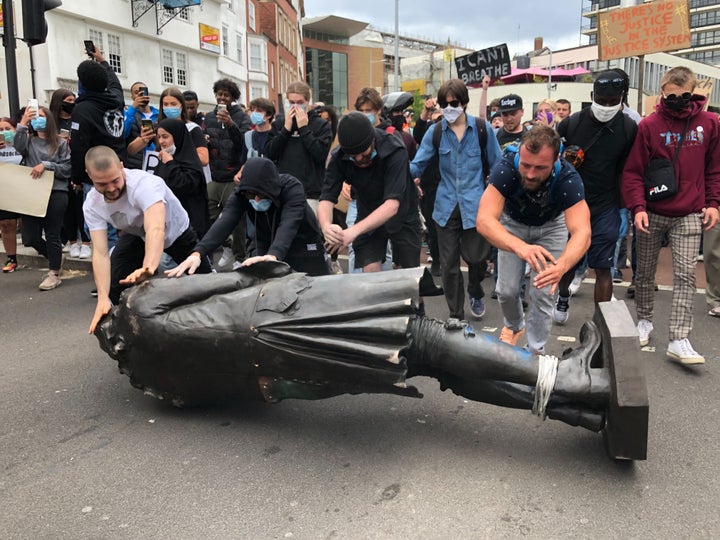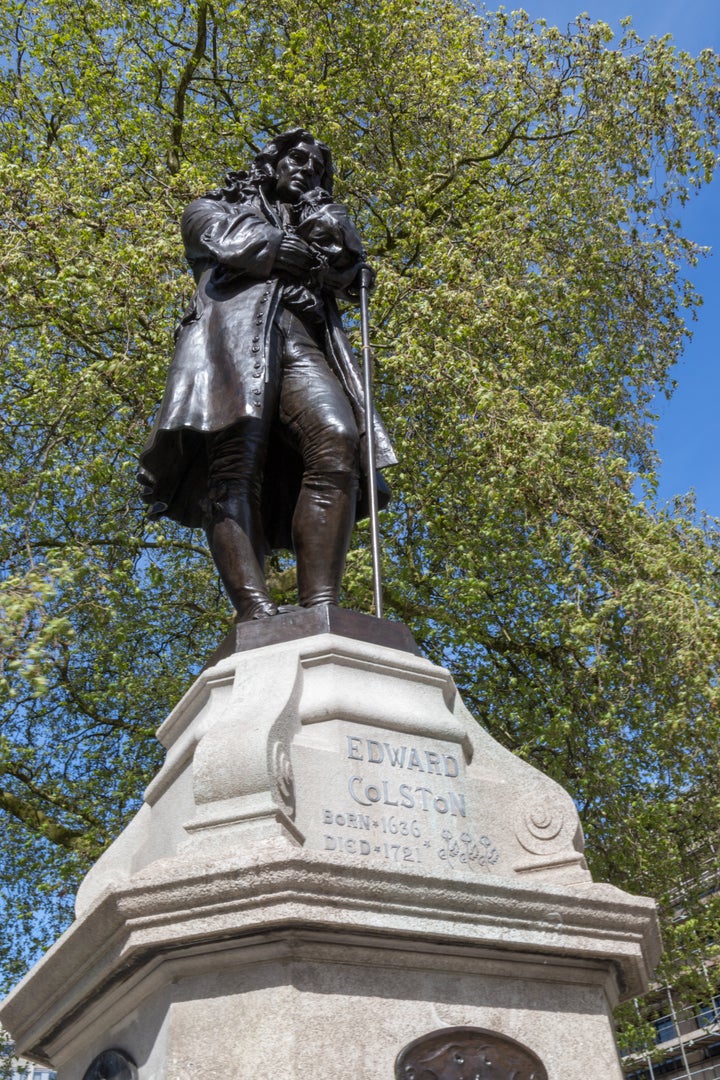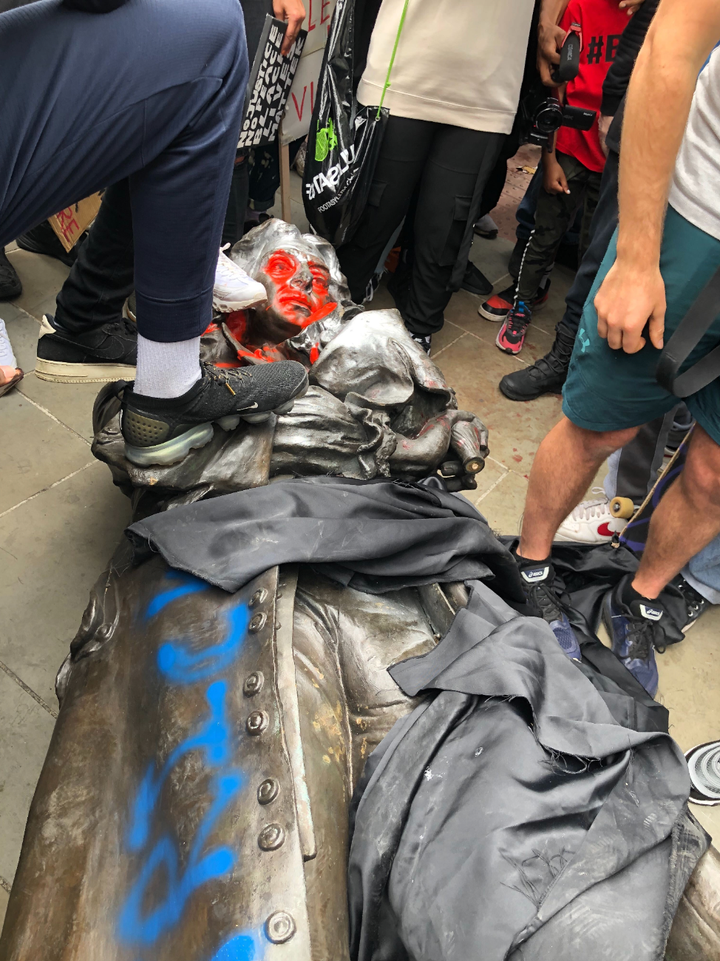Black Lives Matter protesters in Bristol have torn down the controversial statue of a slave trader and rolled it into the River Avon, as thousands of people marched through the city in protest against police brutality following the death of George Floyd.
The memorial to Edward Colston, who made his fortune in the slave trade in the 1600s, has stood in the city since 1895 but in recent years has been the subject of a number of petitions – the most recent of which has garnered more than 10,000 signatures.

Demonstrators took matters into their own hands, tying a rope around the head of the statue – which had previously been covered in a black shroud for the march – and pulling it to the ground.
It was then rolled from the city centre and dumped unceremoniously into Bristol’s harbour – almost exactly at the point where Edward Colston’s ships would have once left for West Africa.
Avon and Somerset Police superintendent Andy Bennett has since announced that the force has launched an investigation to identify a small group of people “who clearly committed an act of criminal damage”.
Home secretary Priti Patel said the toppling of the statue was “utterly disgraceful”.
Bristol’s history is tightly interwoven with the slave trade, and in the 18th century the city was one of the UK’s largest slave ports.
The point at which the statue was tipped into the water is directly next to Pero’s Bridge, which was was named in honour of Pero Jones who came to live in Bristol as a slave.
One of the men who helped roll the statue into the water told HuffPost UK: “It’s what he deserved. I’ve been waiting my whole life for this moment.
“It’s an amazing feeling, it feels like the end of a chapter. It’s what we all needed.”
Asked about what this moment meant to him, the man – who asked to remain anonymous – said: “I don’t think racism will ever be dead, but I think what we need in the future is more consequence for bad actions and for more people to stand up and help each other.
“If we see inequality for any race, any sexuality, any religion, we have to come together.”
Edward Colston
Colston’s legacy has proved hugely divisive as while his money was derived largely from the slave trade, who used much of it to set up charitable foundations some of which survive to this day.
Born into a prosperous Bristol merchant’s family, Colston was educated in London and joined the Mercers’ Company in 1673, where he traded in woollen textiles and wine, PA Media reports.
He became a member of the London-based Royal African Company – which at the time had the monopoly of Britain’s slave trade – in 1680, and between 1689-1690 took on the role of deputy governor.
Other members of the Colston family also had connections with the company: his brother Thomas supplied beads that were used to buy slaves, and his father William owned shares.

By 1689, the company had transported around 100,000 enslaved Africans in chains to the Americas, who were branded with the firm’s initials RAC on their chests.
Unhygienic and cramped conditions meant many of those enslaved died while being shipped, with their bodies said to be thrown overboard.
Colston donated money to causes in and around Bristol before his death in 1721 – including to the city’s churches, founded almshouses, Queen Elizabeth’s Hospital School, and founding a religious school for boys.
According to Historic England, his involvement in the slave trade was the source of much of the money which he bestowed in the city.
Due to his philanthropy, Colston’s legacy has been honoured by the city he once called home, where streets, memorials and buildings bear his name.
A number of Labour MPs tweeted in solidarity with protesters who pulled down the statue.
Earlier, protestor John McAllister, 71, tore down black bin bags used to hide the statue to denounce it in front of fellow protesters.
He told the PA news agency: “It says ‘erected by the citizens of Bristol, as a memorial to one of the most virtuous and wise sons of this city’.
“The man was a slave trader. He was generous to Bristol but it was off the back of slavery and it’s absolutely despicable. It’s an insult to the people of Bristol.”
Police said 10,000 people had attended the Black Lives Matter demonstration in Bristol and the majority did so “peacefully”.

Many protesters wore masks and gloves, but the sheer number of attendees meant that social distancing was impossible at points.
Speaking from the plinth upon which Colston’s statues used to stand, one protester told the crowd: “It’s all well and good every two or three years shouting ‘Black Lives Matter’ but how are you actually going to change what’s going on on this earth”
“We have to start by educating ourselves and our children, education is power. Violence will never change anything. We need to teach our little children for the future.”
